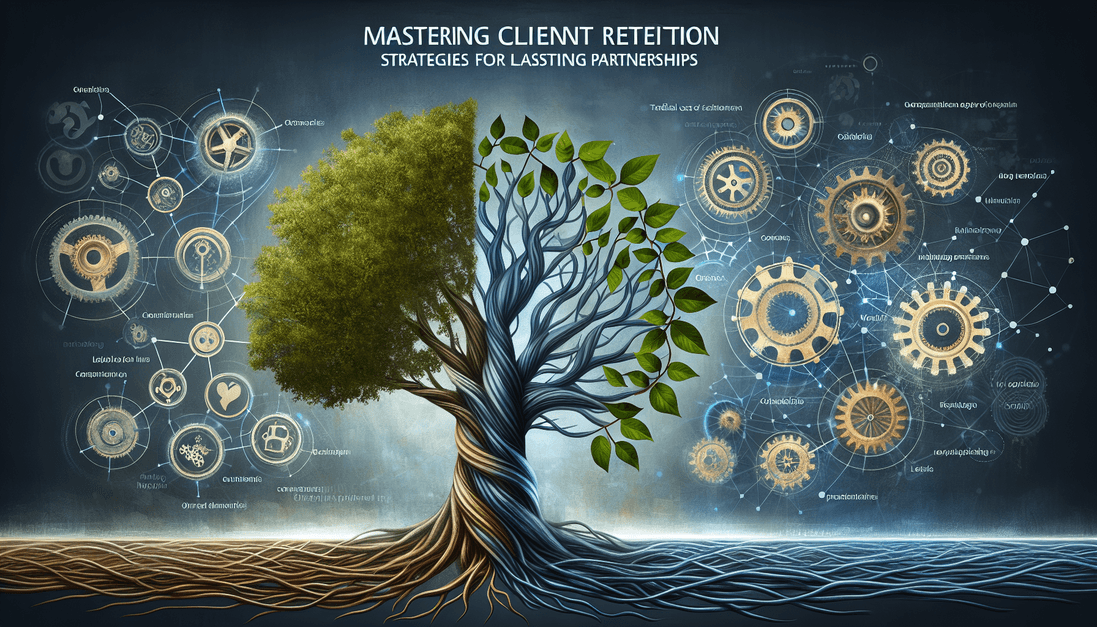Strategic Growth Account Planning: Mastering Efficiency and Impact
What’s Driving Your Growth Account Planning? When it comes to strategic growth account planning, do you ever feel like you’re racing against the clock? So many priorities to juggle, deadlines looming, and a million things screaming for your attention. It’s a lot, right? And trust me, you’re not alone. The truth is, most of us in the shared services space are navigating a sea of pressures every single day. Let’s talk about mastering efficiency and impact—because, honestly, that’s what it’s all about, isn’t it? Getting Clear on Your Objectives Understanding your objectives is the bedrock of strategic growth. Without clear goals, you’re just spinning your wheels. Here’s how I like to break it down: Define Your Vision: What do you want your growth accounts to achieve? Identify Metrics: Do you have KPIs that truly reflect your goals? Understand Your Clients: What are their key pain points? Knowing where you’re going ignites motivation. Think of it as having a map in unfamiliar territory. Know Your Tools Do you have the right tools to help you paint that picture? In our lined-up toolbox, strategic growth account planning needs a mix of technology, data, and creativity. Many look to CRM systems and analytics dashboards. But here’s a little secret: It’s not just about having tools. It’s about knowing how to use them. Consider these tools essential: CRM Software: Stay organized and keep tabs on important customer interactions. Data Analytics Platforms: They help you make informed decisions based on real data. Collaboration Tools: Because teamwork makes the dream work, right? Gather Insights Through Relationships We’ve all heard the phrase, “It’s who you know, not what you know.” In growth account planning, relationships are gold. Building genuine connections with stakeholders can give you insights that data alone simply can’t provide. Don’t underestimate the power of a good conversation over coffee. Here’s how to leverage these relationships: Ask Open-Ended Questions: Get them talking about their challenges. Be Present: Put down the phone and engage! Follow Up: Keep the connection alive beyond meetings. Create a Tailored Account Plan Account plans aren’t one-size-fits-all. They need to be custom-fit for each client. Start with a deep dive into each account. Consider their unique challenges, needs, and potential growth opportunities. Structure your plan like this: Account Overview: Snapshot of the client, including history and current state. Goals and Objectives: What success looks like for this client. Strategies and Tactics: Specific actions you’ll take to meet those objectives. Expected Outcomes: Define what success will look like. This method provides clarity and direction while allowing flexibility for adjustments. Use Metrics to Monitor Progress You’ve crafted an account plan—great! But now what? Monitoring is crucial. Regularly checking metrics helps keep the plan dynamic and responsive. Ask yourself these questions: Are We Meeting Our KPIs? Regular check-ins on your metrics keep you on target. Is Client Feedback Incorporated? Always adjust and adapt based on client needs. Are Our Strategies Effective? If not, pivot before it’s too late! Using data like this makes your account plan feel like a living document. The Power of Team Collaboration You’re not in this alone! Engaging your team in the strategic growth account planning process fosters creativity and innovation. Here’s how to maximize collaboration: Host Brainstorming Sessions: Get different perspectives on the table. Encourage Idea Sharing: Let everyone chime in and share their thoughts. Assign Roles: Foster ownership within the team to boost engagement. A collaborative approach turns account planning from a chore into an exciting endeavor! Celebrate and Reflect Finally, don’t forget to celebrate your wins, no matter how small. Recognizing achievements keeps morale up and encourages a positive spirit. And while you’re at it, take a moment to reflect on your journey: What Worked? Acknowledge the successes—no matter how tiny! What Can Be Improved? Self-evaluation is a key to future success. What Did We Learn? Every experience can offer valuable lessons. Wrap It Up Mastering efficiency and impact in strategic growth account planning takes effort, but it’s worth it. When you embrace these principles, you’ll pave the way for successful partnerships and trust-based relationships. And remember, the shared services industry is constantly evolving. Make sure to stay ahead of the curve by following the latest trends and insights over at THEGBSEDGE. So, are you ready to take your strategic growth account planning to the next level? Let’s move forward, together.
Strategic Growth Account Planning: Mastering Efficiency and Impact Read More »









